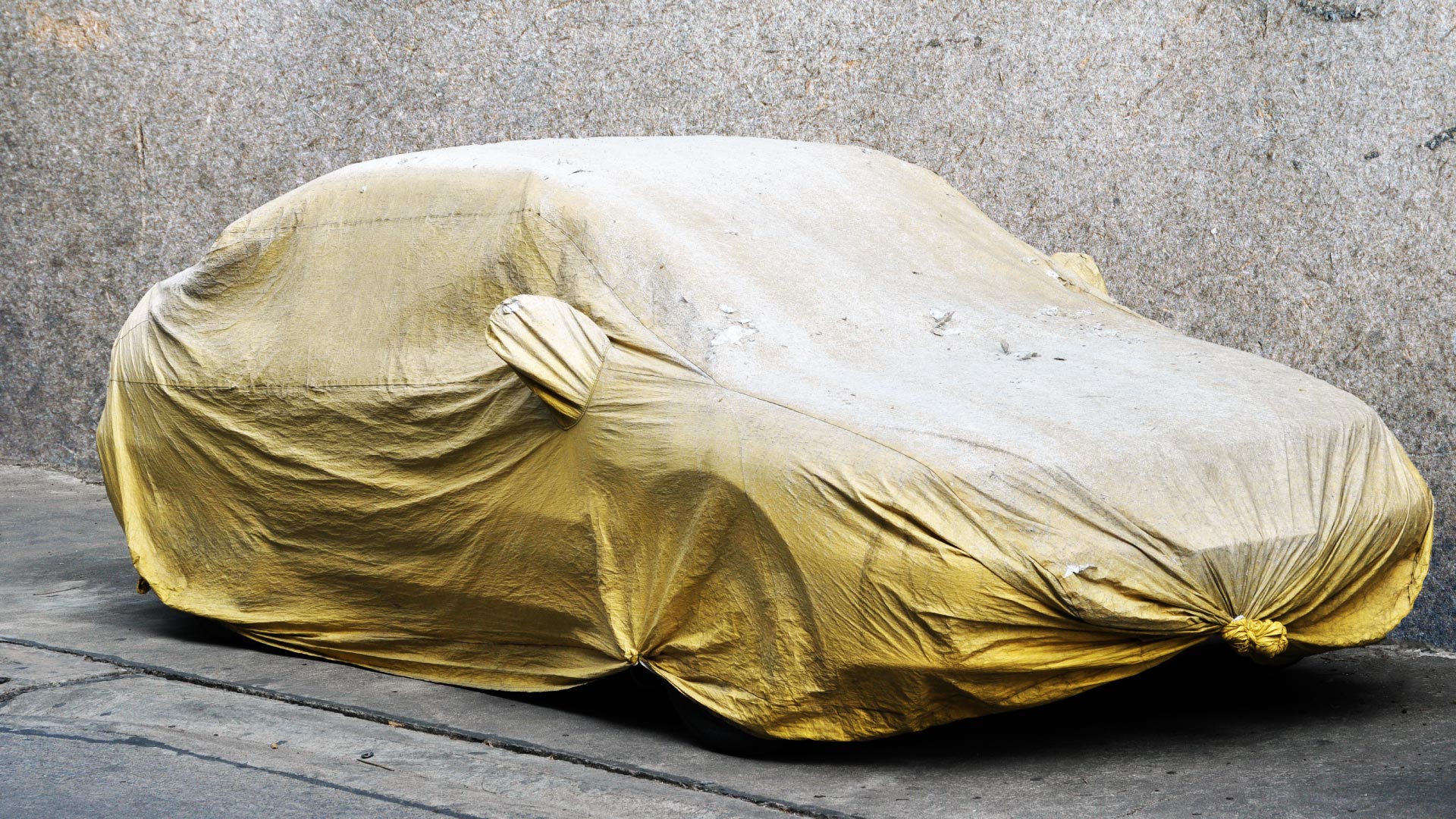Thinking about tucking your car away for a bit? Maybe it’s because you’re jetting off on a long vacation. Or perhaps winter is coming, and your ride needs a cozy spot away from the snow.
Long-term car storage isn’t the same as simply finding a place to park it. You have to keep it safe and sound while you’re not around to take it for a spin and we’re here to show you the ropes with our curated list of car storage tips.
- Where to Store a Car
- Climate and weather considerations
- Prepare Your Car for Storage
- General Vehicle Maintenance
- Clean Your Vehicle
- Regular checkups
- Keep Your Car Safe from Pests
- Car covers and wraps
Where to Store a Car
Now, let’s talk about finding the perfect storage location for your four-wheeled friend. The truth is, where you store a car makes all the difference. Here are your options, at home or in vehicle storage:
Carport — Quick to set up, easy on the wallet and with decent protection from the sun and rain. But, depending on the season and your location, a carport is an open invite for pollen, dust, sneaky sun rays and, at the other end of the spectrum, frost.
Garage — With walls and a door, garages are about as secure as it gets. They keep out almost everything, from thieves to thunderstorms and the pesky pollen.
Covered Car storage — A step up from the open air, this is your car’s umbrella. Great for bigger vehicles that don’t fit in traditional spaces, it shields your ride from the worst of the weather without breaking the bank. However, if long-term car storage is your goal, this isn’t your best bet.
Indoor vehicle storage — Can I store my car in a storage unit? Absolutely. Indoor vehicle storage can keep your car safe from thieves, vandals and the weather, no matter how extreme it gets. While it costs more, for those treasure-on-wheels moments, it’s worth every penny.
Outdoor vehicle storage — The equivalent of parking your car in a secure lot. It’s a wallet-friendly choice, especially for short stints. But remember, your car will be out in the open, facing sun, rain or snow, just like it would in your driveway. You will want to take precautions to protect your vehicle from the elements.
Climate and weather considerations
Besides the type of car cover, choosing a storage spot to leave your car also depends on what’s happening outside.
- Is it sunny and hot where you’re at? Constant sun can damage the paint and crack interiors. Indoor storage or at least a canopy can keep your car cool and collected.
- Is it wet and wild — rain, snow, hail? Indoor storage is your friend here, shielding your car from water damage and rust.
- Or perhaps cold and frosty? Freezing temps can be tough on batteries and fluids. An enclosed space keeps your car ready to roll, even when it’s chilly outside.
In short, think about what your car will face while it’s stored. Match the storage solution to your climate, and you’ll come back to a car that’s as happy as when you left it.
Prepare Your Car for Storage
Before you even think of saying “see ya later” to your car, there’s a bit of homework to do, especially if you are storing your car long-term or during the winter. It’s not like leaving a plant without water for weeks, but your car does need a bit of TLC before you part ways.
General Vehicle Maintenance
First off, give your car a thorough check-up, just to make sure it has all it takes to wake up from its hibernation without skipping a beat.
- Start with a general look-over. Any warning lights on? How’s it driving? Listen for any unusual sounds, too.
- A sleepy battery is a sad battery. Check its age and health. If it’s on the older side, consider a replacement or plan for a trickle charger to keep it happy.
- Check tires for wear and tear. You don’t want flat spots or, even worse, flat tires when you return.
- Check the oil, coolant and brake fluid.
- Perform a brake check and make sure they aren’t wearing thin.
- Look under the hood. Filters, belts, hoses — give them all a once-over to ensure they’re not heading for a breakdown.
- Fill the gas tank to minimize air space.
- Add fuel stabilizer to the fuel fresh and prevent degrading.
- Check lights and signals. Just a quick flick of the switches to make sure you’re seen and can see when it’s time to hit the road again.
- Disconnect the battery to prevent it from going dead.
Not much of a gearhead? No worries. A trip to your friendly neighborhood mechanic can cover all this and more. They’ll know just what your car needs based on its mileage and model.
Clean Your Vehicle
Before your car takes its well-deserved rest, a spa day is in order. Here’s the fast track to getting it storage-ready:
- Start with a thorough wash, not missing any nooks or crannies. Dirt and grime left unchecked can damage the paint over time. Finish with a solid coat of wax to protect the exterior.
- Inside the car, vacuum every inch and wipe down surfaces. Moisture is not a friend here, so use moisture-absorbing packs, like silica gel, to keep the cabin dry. A protective cleaner for vinyl surfaces will prevent drying and cracking.
Regular checkups
You want to eventually come back to a car that’s as ready to hit the road as you are, so go ahead and swing by once a month to give your car a once-over. Check the tire pressure, battery charge and fluid levels. Top off as needed to keep everything in working order and peek inside to ensure no unwanted guests or dampness has made a home in your car.
If possible, put your car to the test with a short drive every couple of months. It helps keep the battery charged and the engine happy, not to mention preventing flat spots on tires.
Keep Your Car Safe from Pests
Probably some of the most sought-after car storage tips involve keeping uninvited guests like rodents and insects away.
- The first step is starting with a clean slate since pristine storage space is less inviting to pests. Remove clutter and food sources from around the car to discourage nesting.
- Next, plug openings, especially the tailpipe, to block entry points. A simple rag can do the trick — just remember to remove it later!
- Consider non-toxic deterrents like peppermint oil or ultrasonic repellents that keep pests away without harm.
- Rodents prefer the dark. Keep your storage area well-lit or use strobe lights to discourage nesting.
If you’re dealing with an existing problem, traps can help. Place them strategically but keep them away from pets and children.
Car covers and wraps
Car covers also play a role in preserving a vehicle in storage. Invest in a high-quality, breathable car cover. It protects against dust, moisture and pests while preventing mold and condensation. Avoid plastic tarps that trap humidity and can do more harm than good and ensure the cover fits snugly. Loose covers can invite pests seeking shelter.
Pro Tip: For ultimate protection, consider a car storage bubble. This inflated capsule wards off pests, dust and humidity, providing a controlled environment for your car.
Keep Your Car Safe and Sound
Your car isn’t just another item in storage — it’s an investment, a means of transport and maybe even a bit of a treasure.
First of all, make sure your car is locked up tight and consider using steering wheel locks and immobilization devices to further deter potential thieves.
Use a sturdy lock for your storage unit to ensure you’re the only one getting in. For home storage, a deadbolt lock on the garage door can offer an extra layer of security. T-handle locks are also great for overhead doors.
If your storage facility allows, set up an alarm system for your unit since your car’s alarm cannot be active with the battery disconnected. The noise alone can be a significant deterrent to would-be intruders.
Now You Know How To Store a Car Long-Term
Time for a brisk recap on stashing your car away so it stays in tip-top shape while it’s taking a break from the roads. Kick things off by picking a spot that feels just right for your car — somewhere it can rest easy. Next up, give it a good scrubbing from the roof down to the rims, making sure it’s spick and span both inside and out.
What comes next is a quick health checkup. Peek under the hood, check on the battery, pump those tires to the right pressure and top off all the essential fluids. Oh, and don’t let the little critters turn your car into their new home sweet home. A few clever moves can keep uninvited guests out. Speaking of uninvited, beef up your car’s security to keep sneaky thieves at bay
Every little thing you do wraps your car in another layer of care. So, go on and follow these car storage tips, parking your beloved ride with the peace of mind that you’ve dotted all the i’s and crossed all the t’s to keep it in the best shape possible.
Read more:







